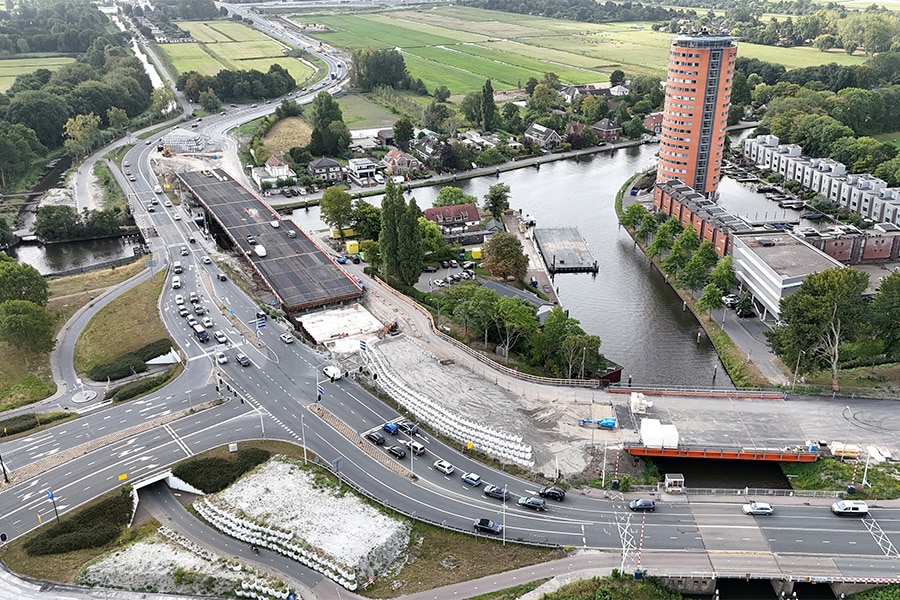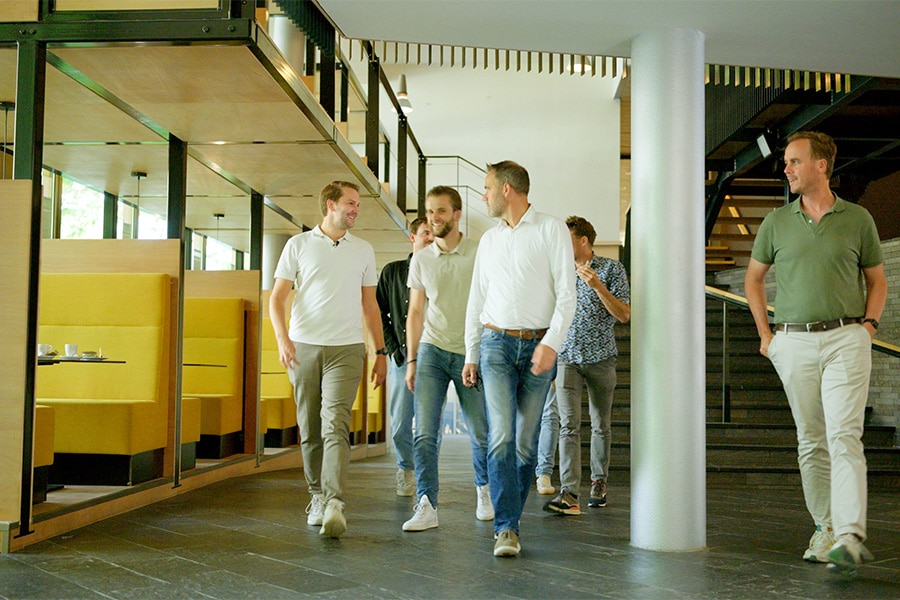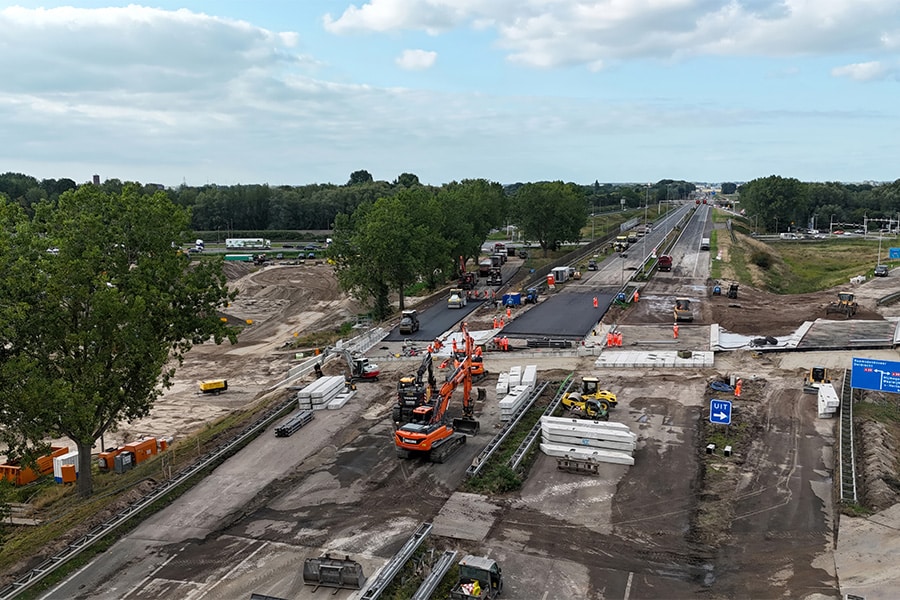
The 100 hours of Hooipolder
A world-class achievement
The A27 has been in the traffic jam top 10 for years. Especially at junction Hooipolder, where the A59 and A27 meet, traffic invariably gets stuck. "The goal of the project is therefore clear: improve traffic flow and reduce travel time," says Marco Keijzer, project manager at Rijkswaterstaat. "This will be done, among other things, by building a new underpass that will enable the connecting arch from the A59 to the A27. Traffic from Rotterdam/Zeeland towards Utrecht will thus soon have a free passage without traffic lights."
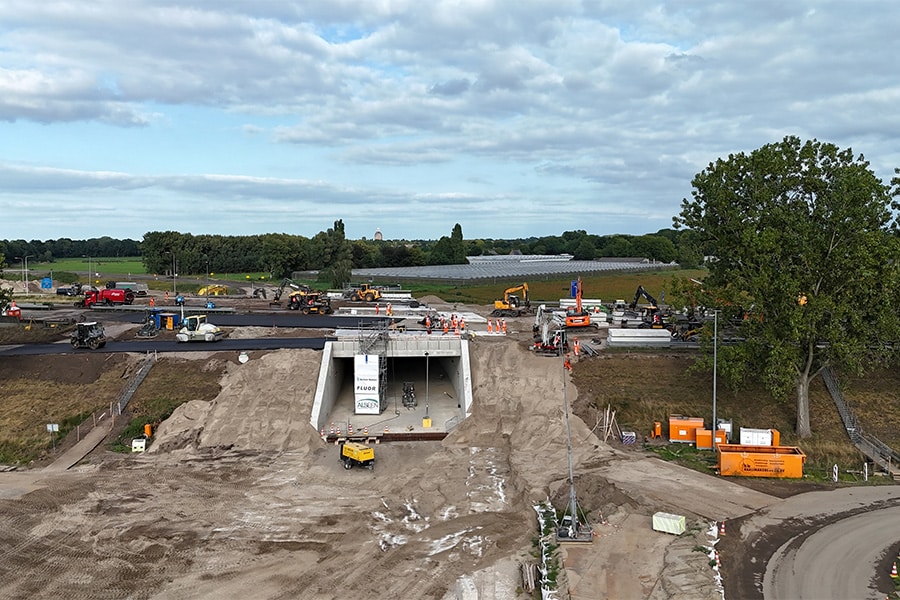
Ambitious milestone
The project is part of the Route Decree adopted in 2018. A total of 47 kilometers of highway will be tackled: widening, new connections, tig culverts and numerous engineering structures that will be renewed or modified. The Merwede Bridge and Keizersveer Bridge will also receive a thorough overhaul. The project is divided into two contracts: a northern and a southern part. The southern part is being picked up by construction consortium ALSÉÉN, consisting of Ballast Nedam and Fluor Infrastructure. "The beauty of this part is that it is not only a replacement task, but also has a considerable share of new construction," Keijzer believes. He refers to the construction of a large number of new engineering structures, a new access road for Raamsdonksveer and the approach to the Hooipolder interchange with new engineering structures and a new connecting road to be built. "Because of the large proportion of new construction, the 'conversion' of the Hooipolder interchange has deliberately been brought forward in the planning, and should be completed by the end of 2026. An ambitious milestone."
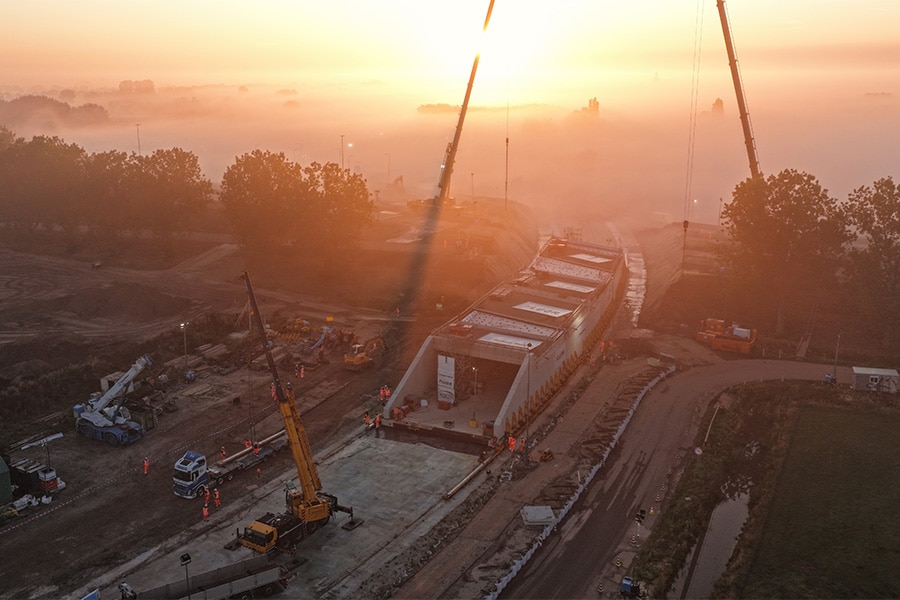
The idea
The original phasing plan envisioned several phased closures, according to Keijzer. "In consultation with ALSÉÉN, the idea arose to do everything at once: a 100-hour closure. That meant closing the A27 at Hooipolder completely. This variant did offer the most advantages: less long-term disruption, higher safety for the builders and the best quality of work. But you don't take a decision like that lightly. Rijkswaterstaat had to agree, and scheduling such a major closure into the busy national traffic schedule was a challenge. It was not to clash with other large-scale closures elsewhere in the country. In the end, we managed to tie up the operation in the summer of 2025."
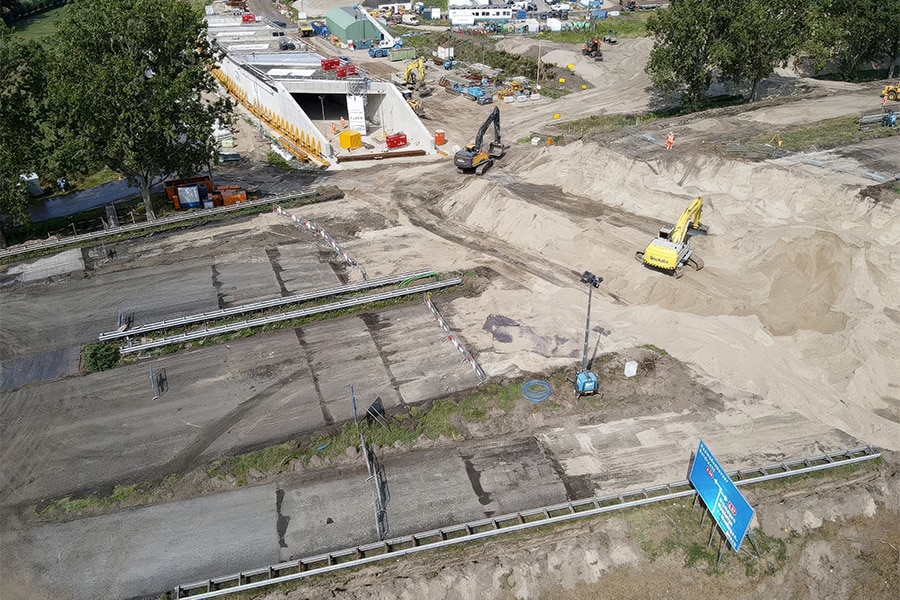
Slack layer
An operation of this magnitude hinges on thorough preparation. "From February 2025, we started to work out all the plans in detail," says Joris van den Hoek, closing coordinator of the 100 Hours of Hooipolder on behalf of ALSÉÉN.
"Everything revolved around identifying and mitigating risks. For example, we did extensive research into the condition of the subsoil. At the time, the A27 was constructed on a relatively weak layer in the topsoil of the time. This may not have caused any problems over the years, but now that a structure weighing thousands of tons had to be pushed in, it was crucial to know exactly how deep that layer was. Additional soundings, mechanical borings and monitoring wells provided more clarity. It determined the time schedule, so we knew how much time and energy went into excavating this layer and replenishing it with good sand."

Dress rehearsal
Construction consortium ALSÉÉN, together with its subcontractors, worked out the schedule of hours for the mega-operation in detail. "We also pulled work apart and split it up in order to keep everything safe. Fortunately, we had room for that here," says Van den Hoek. "Every phase in those 100 hours was worked out in graphics, so that the work sequence and logistical route per discipline was clear to all involved. The cables and pipes were exposed and relocated beforehand, so that no valuable time would be lost on these during the closure. The central reservation was also remediated due to pollution, and a drainage test was held to test how the groundwater would behave. Even a dress rehearsal took place: a few weeks before the 100 hours, the underpass was moved several meters to test whether the sliding technology worked. Everything was about ruling out surprises."
World Class
The underpass was built next to the A27 in a meadow. Once the highway was closed, more than 20,000 m³ of soil was hastily excavated. Then soil improvement was applied and the sliding in could begin. The underpass is 115 meters long, 15 meters wide and weighs 6,300 tons. "Using 90 jacks, the structure was first lifted 5 centimeters and then push jacks ensured that the structure moved forward in small strokes averaging 78 centimeters," explains Pieter Kastermans, project manager from ALSÉÉN at the Hooipolder interchange. "The speed was around twelve meters per hour. The whole thing rested on a specially prepared sliding track, and in order to get loose from the ground was built on two layers of foil and a reinforced work floor. In less than 11 hours, the artwork was exactly in place." The precision is impressive: 0 millimeter deviation in longitudinal direction, only 6 millimeters in transverse direction and 7 millimeters in height. For a structure of this size, a world-class achievement.
Goosebumps
After shoveling in, the next phase began: backfilling with sand, laying baffle plates for the transition from the artwork to the earth track, connecting the sewers and applying the asphalt. Lighting and guide rails also had to be reinstalled, as did the landscaping of the verges and the welding of cables and pipes back together. This required over 600 welds. On average, some 80 people were at work simultaneously in varying formations and divided among various disciplines. The entire operation proceeded safely: no incidents occurred. The gentlemen therefore look back on the entire operation with a sense of pride. Van den Hoek: "We conceived the plan in detail, but to then see it become reality gives goose bumps."
The operation at Hooipolder was not the last such job. A second slide-in operation at Oosterhoutseweg will follow in 2025," Kastermans said. With the experience gained and the smaller size, the team expects that this will not require 100 hours. "Some of the equipment that was used for the 100-hour slide-in action will soon be deployed again at the Oosterhoutseweg." With the 100 hours of Hooipolder, construction combination ALSÉÉN has shown what is possible when preparation, engineering and craftsmanship come together. It forms an important foundation towards a better flowing A27.

